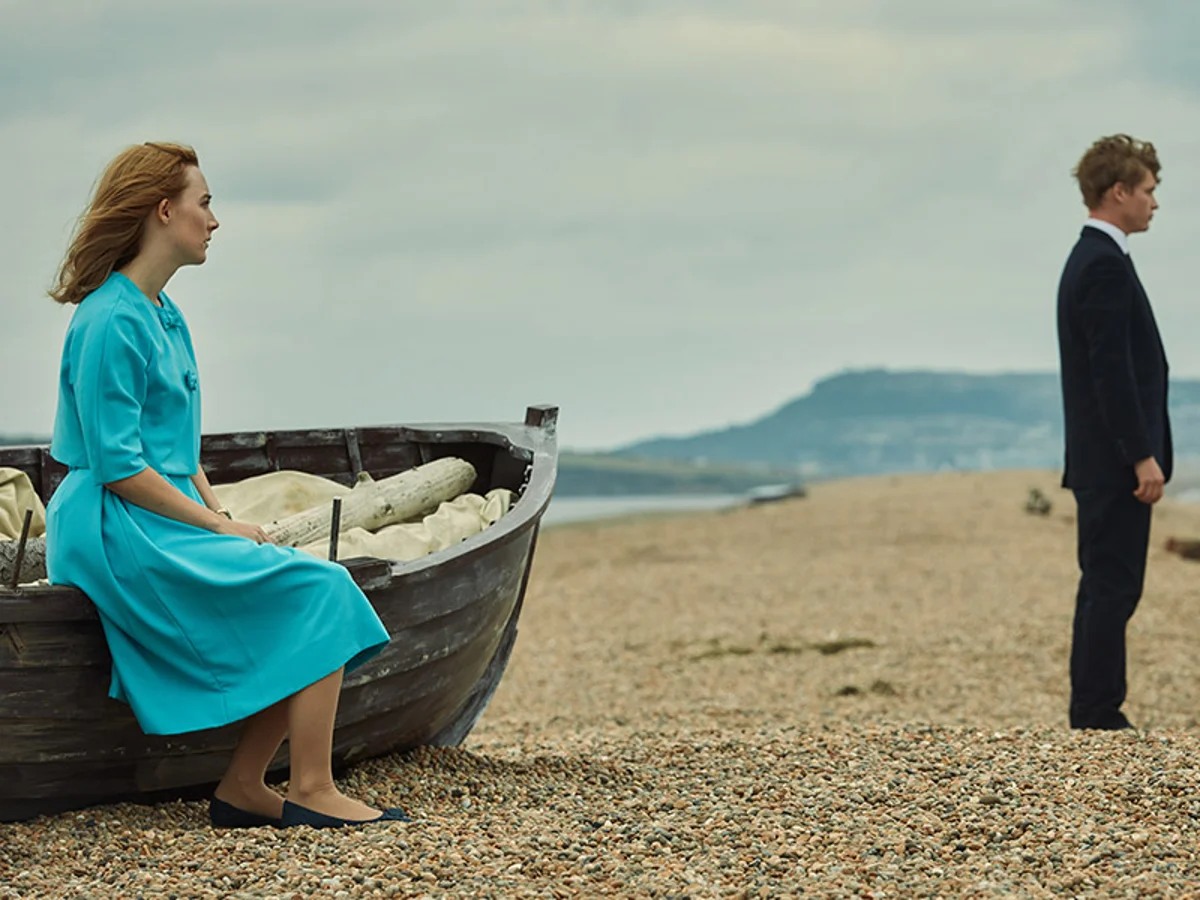On Chesil Beach (2017)

“On Chesil Beach” (2017) is a British drama film directed by Dominic Cooke, based on Ian McEwan’s novel of the same name. McEwan, who also wrote the screenplay, adapted his critically acclaimed novel for the screen. The story takes place in the early 1960s and centers around a young couple, Florence Ponting and Edward Mayhew, whose honeymoon on Chesil Beach takes a tragic turn. The film explores themes of love, sexual intimacy, social expectations, and the impact of unresolved tension in relationships. With a powerful, understated performance from the cast, it reveals the complexities of human connection and the destructive consequences of miscommunication.
The narrative unfolds over the course of a single night on Chesil Beach, as newlyweds Florence (Saoirse Ronan) and Edward (Billy Howle) are about to consummate their marriage. They come from very different backgrounds: Florence is an upper-class, highly educated woman with a passion for classical music, while Edward is a working-class, less articulate young man. Despite their deep emotional connection, they are both nervous and inexperienced, particularly about their sexual relationship. What starts as a seemingly romantic evening soon becomes a tense and awkward situation, and their inability to communicate openly about their fears and desires leads to a catastrophic moment that changes the course of their lives.
The film’s exploration of Florence and Edward’s personalities is one of its most compelling aspects. Florence is portrayed as intelligent, poised, and outwardly confident, but her inner turmoil, particularly concerning sex, is a key driver of the story. Saoirse Ronan’s performance reveals Florence’s vulnerability and the internal struggle she faces between her feelings for Edward and her deep-seated anxieties about intimacy. On the other hand, Edward, played by Billy Howle, is initially more open about his feelings but is equally inexperienced and unsure. His innocence and excitement about their sexual relationship clash with Florence’s fears, creating a disconnect that the couple is unable to bridge. Their contrasting responses to intimacy reflect their emotional and psychological backgrounds, making their miscommunication all the more poignant.
One of the central themes of “On Chesil Beach” is the discomfort and shame surrounding sexuality, particularly in the context of a repressive society. In 1960s England, sexual mores were far more restrictive than they are today, and this is reflected in the characters’ anxieties. Florence’s fear is rooted in a traumatic experience she had as a child, while Edward’s excitement is clouded by his own ignorance and lack of experience. This disparity between the characters’ perceptions of sex illustrates the broader cultural taboos and the pressure to conform to societal expectations of sexual behavior, making their inability to communicate effectively even more tragic. The film poignantly captures how these unresolved issues can affect intimacy and love, leading to a breakdown in their relationship.
The setting of Chesil Beach itself plays a significant symbolic role in the film. The vast, desolate beach, with its rolling waves and pebbled shore, mirrors the emotional landscape of the characters. The wide shots of the beach convey a sense of isolation and separation, suggesting how both Florence and Edward are emotionally distant from one another despite being physically close. The contrast between the beauty of the natural world and the tension within the couple’s relationship serves as a powerful visual metaphor for the gulf between their desires and fears. The cinematography by Sean Bobbitt captures the intimate, quiet moments of the characters with a subtlety that allows their emotions to unfold organically, heightening the impact of their tragic encounter.

The film also examines the influence of family and class expectations on the couple’s relationship. Florence’s upbringing in a wealthy, conservative family has instilled in her a rigid sense of propriety, which contributes to her discomfort with intimacy. Edward, meanwhile, comes from a working-class background, where his own set of expectations about love and sex is shaped by different cultural norms. Their backgrounds create a sense of pressure that they cannot escape, and their inability to navigate these differences contributes to their eventual heartbreak. “On Chesil Beach” subtly critiques the societal constraints that prevent individuals from embracing their true selves, especially in the context of romantic and sexual relationships.

The climax of the film comes when Florence, overwhelmed by her fear, rejects Edward during their wedding night. This moment of tension and misunderstanding leads to a profound rupture in their relationship. The consequences of this night resonate throughout their lives, with both characters haunted by the inability to truly connect with one another. The film presents their subsequent separation and the years that follow, showing how the unresolved trauma from that night continues to shape their futures. The narrative is marked by a haunting sense of “what could have been,” as both characters struggle to move on from the emotional scars left by their failed connection.

“On Chesil Beach” (2017) is a delicate, emotional exploration of love, intimacy, and the devastating consequences of miscommunication. With superb performances by Saoirse Ronan and Billy Howle, the film brings Ian McEwan’s novel to life, offering a poignant meditation on the complexities of relationships and the impact of societal expectations. The tragic events of one night on Chesil Beach serve as a powerful reminder of how deeply our fears and insecurities can shape our connections with others, sometimes leading to irreversible outcomes. In its exploration of emotional vulnerability, “On Chesil Beach” leaves a lasting impression, offering a profound reflection on love, shame, and the need for open communication in intimate relationships.











